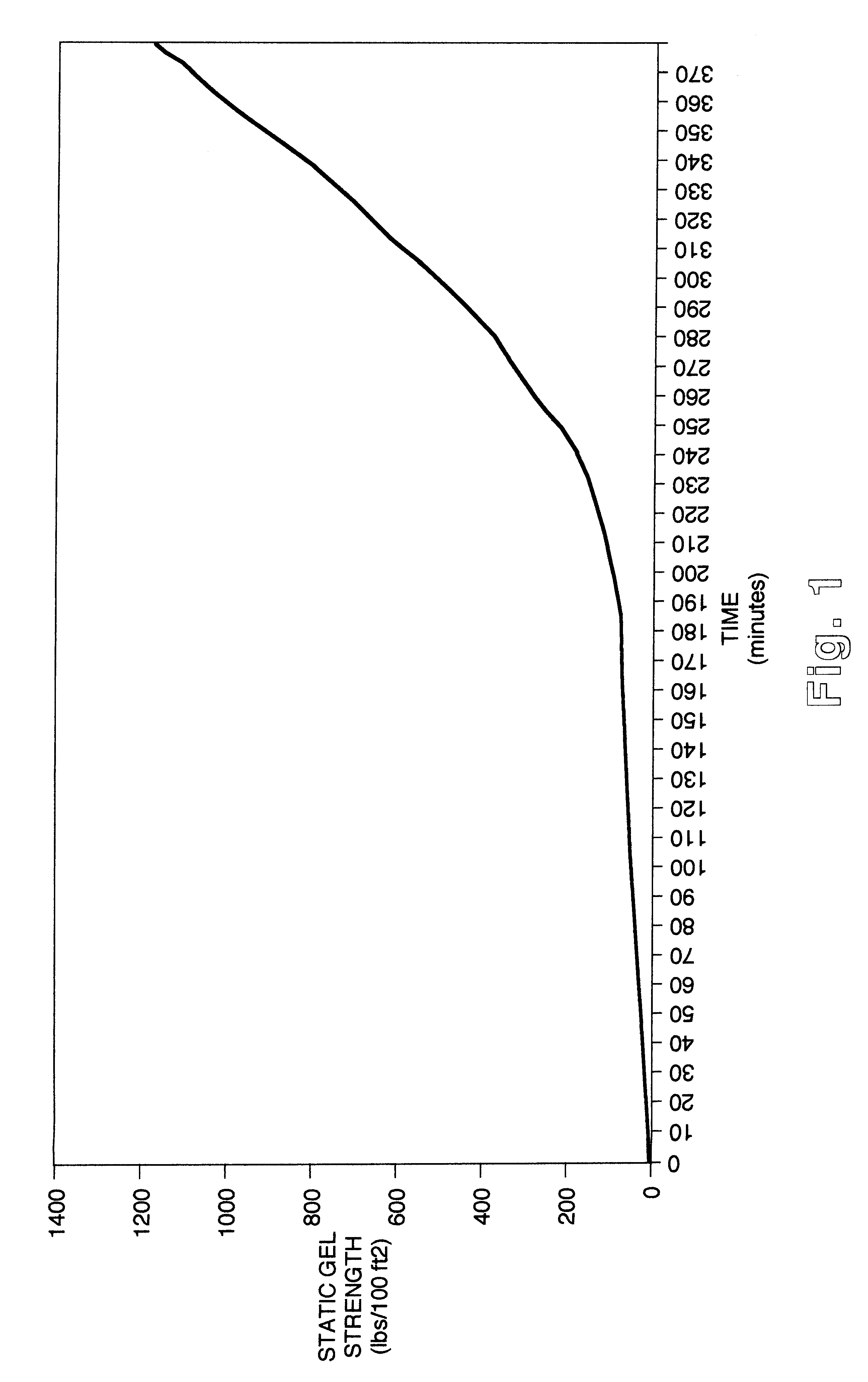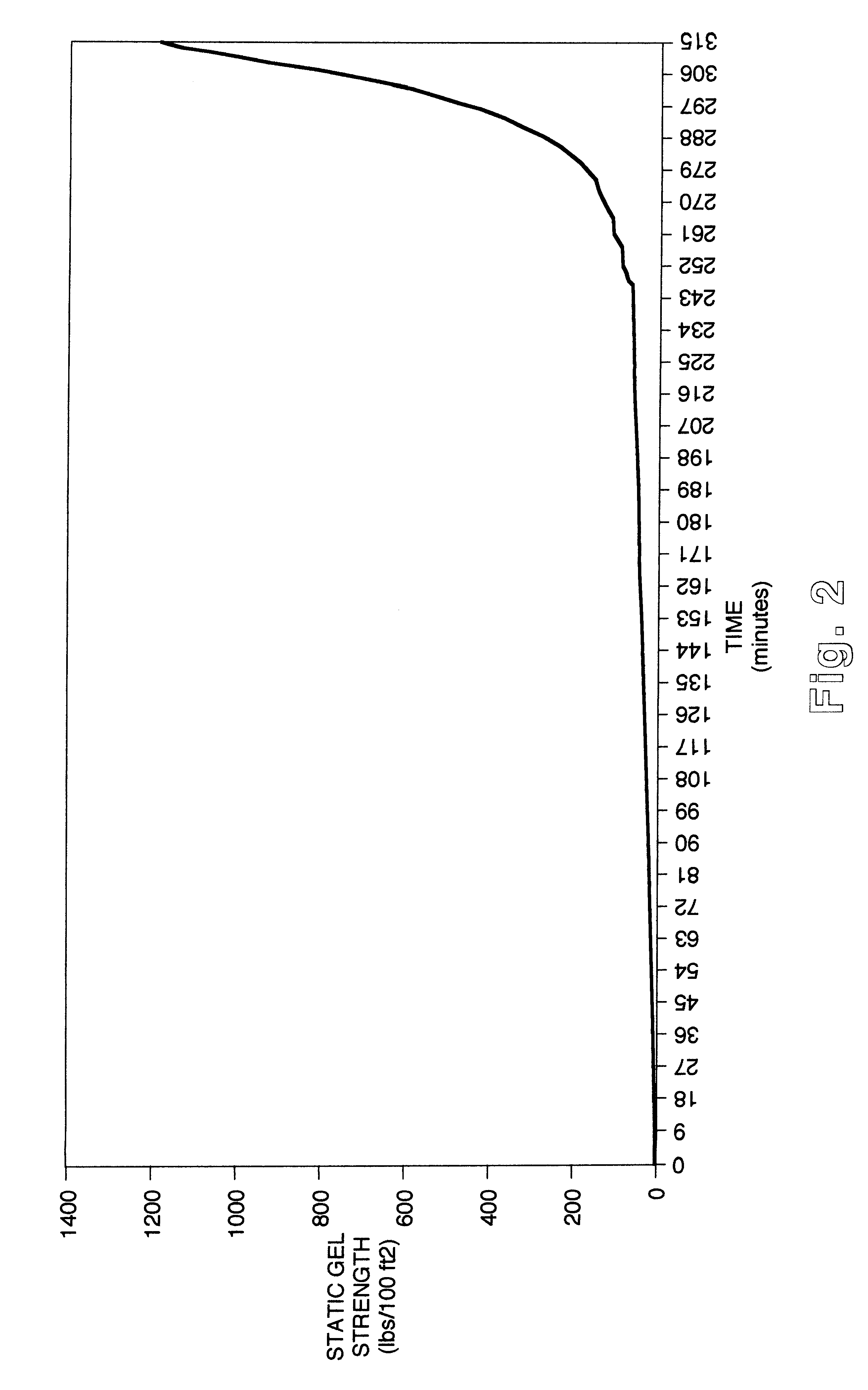Cementing compositions, a method of making therefor, and a method for cementing wells
- Summary
- Abstract
- Description
- Claims
- Application Information
AI Technical Summary
Problems solved by technology
Method used
Image
Examples
Embodiment Construction
A cement composition or slurry for forming a cement seal, either in a downhole pipe or in an annulus between a wellbore and a downhole pipe, such as a well casing, includes a hydraulic cement, silica, water, an SB latex, a set retardant, and, optionally, additives such as accelerators, dispersants, etc. The compositions according to the preferred embodiment comprise three essential ingredients: cement, 10 to 50% (by weight of cement) latex, and 30 to 200% (by weight of cement) water. In addition other materials may be used that are normal to the design of a cementing slurry. Some of these are 0.1 to 1.5% by weight of a dispersant to lower the mixing viscosity and 0.1 to 3.0% set retarders to allow pumping to the downhole temperature and pressure.
While various hydraulic cements can be utilized in forming the cement slurries or compositions of the preferred embodiment, Portland cement is preferred and can be, for example, one or more of the various types identified as API Classes A-H ...
PUM
| Property | Measurement | Unit |
|---|---|---|
| Fraction | aaaaa | aaaaa |
| Fraction | aaaaa | aaaaa |
| Fraction | aaaaa | aaaaa |
Abstract
Description
Claims
Application Information
 Login to View More
Login to View More - R&D
- Intellectual Property
- Life Sciences
- Materials
- Tech Scout
- Unparalleled Data Quality
- Higher Quality Content
- 60% Fewer Hallucinations
Browse by: Latest US Patents, China's latest patents, Technical Efficacy Thesaurus, Application Domain, Technology Topic, Popular Technical Reports.
© 2025 PatSnap. All rights reserved.Legal|Privacy policy|Modern Slavery Act Transparency Statement|Sitemap|About US| Contact US: help@patsnap.com


